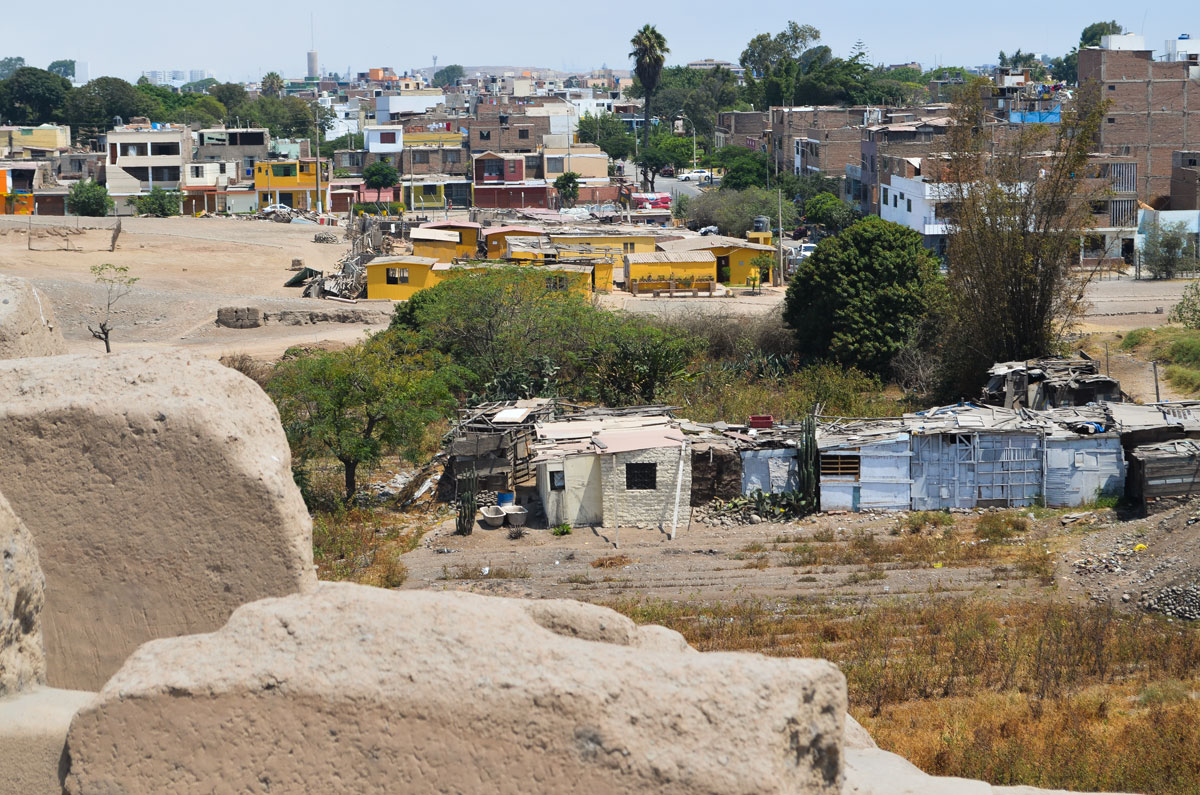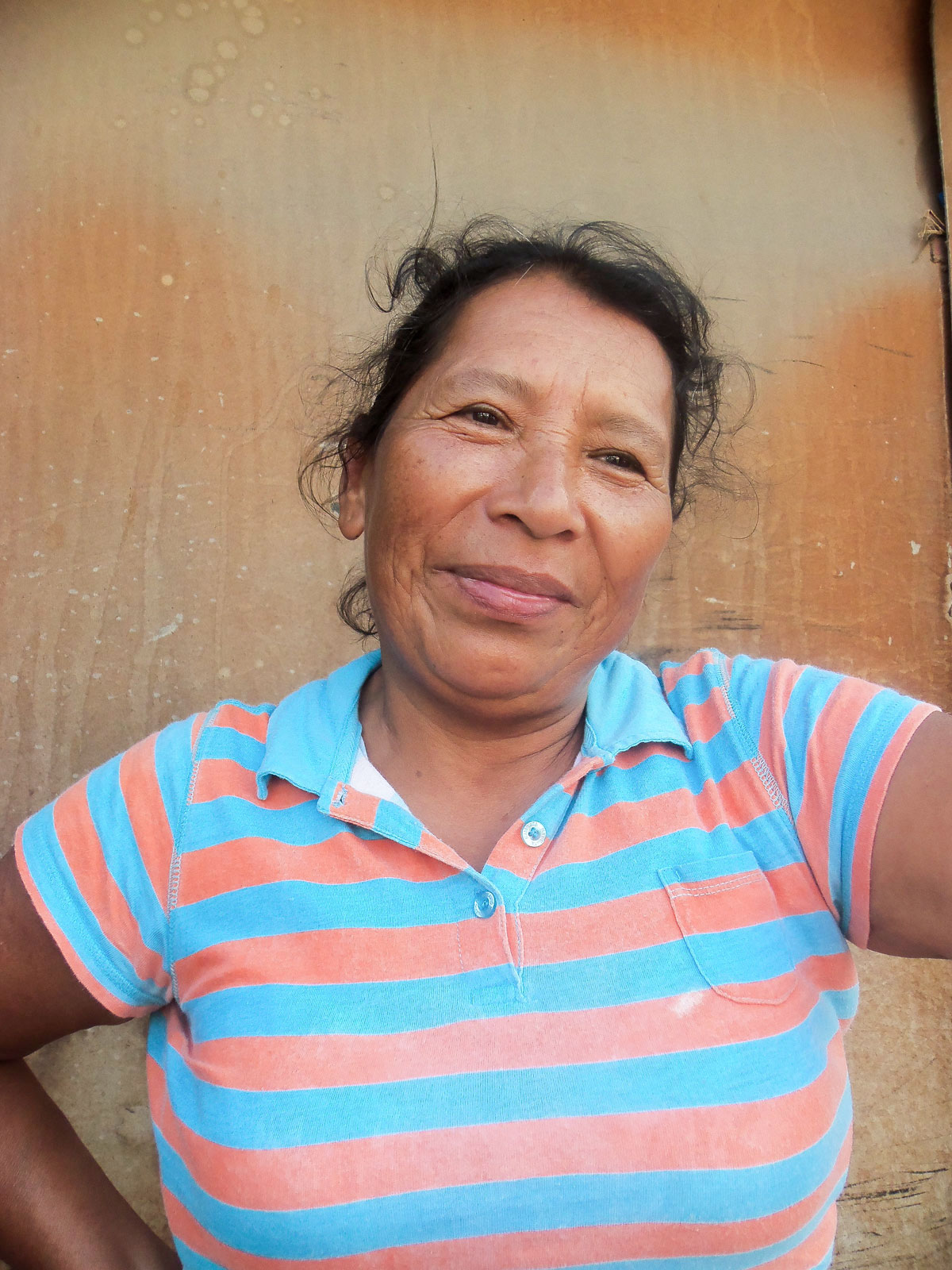
What the Huaca?
The fight to save Lima's archaeological ruins

The fight to save Lima's archaeological ruins
In Lima, Peru, there are more than 360 known huacas and some may still be undiscovered. They're scattered throughout the city, hidden on residential streets and sandwiched between small businesses. The huacas are everywhere, and maybe that's why they're in danger of disappearing.
Huaca \wa.ka\:
Means "sacred" in Quechua, an indigenous Peruvian language, but the term is most commonly used to describe an ancient Peruvian site or object.
In Peruvian culture, huaca is a term commonly used to describe archaeological sites, but it's more complex than that. Even though most Peruvians think of a huaca as a tall stone pyramid, the word's definition is actually much broader.
"Huaca is also an adjective. You can be huaca and have the condition, said Jaime Luis Castillo Butters, archaeology professor and Vice Minister of Cultural Patrimony and Cultural Industries. Huaca is the name that we give basically to all remnants of ancient societies and cultures.
Peru is known as the land of the Inca but it's also home to more than 25 earlier cultures, each with its own rituals, traditions and languages. Three of these cultures, the Lima, Wari and Ichma, all left behind huacas in what is now Peru's capital city. These archaeological ruins hold clues to understanding the people who once walked Lima's streets.
Though contemporary Peruvians can literally walk by ancient history, many of their ancestors' secrets remain hidden beneath layers of dirt and rock that have formed over time. This is because most huacas aren't fully excavated. Instead they look like mounds of dirt, mostly unguarded and only sometimes fenced.
The huacas are not concentrated in one part of Lima. Rather, huacas can be found across the city. We visited 14 huacas in seven districts.
Some huacas are well preserved while others show signs of destruction.
Huaca El Paraiso, which is widely regarded as the oldest huaca in Lima, dates back to about 4000 B.C. But even that one isn't safe. In July 2013, one of its 12 pyramids was destroyed. Since then, the government has increased security at the site to protect the huaca, but its size makes it difficult to monitor.
The site covers many 50 hectares, making it roughly the size of 95 football fields. Most of the site is in what is called a "basural" stage in Spanish, meaning it has not been excavated.
Like El Paraiso, a majority of Lima's huacas remain unexcavated due to lack of government funding. Even if the government had the resources to protect them, a majority of Lima's huacas are located on land that is privately owned.
According to statistics from the Peruvian Ministry of Culture, 60 percent of the huacas in Lima are classified as threatened. Details about the precise condition of these approximately 220 endangered huacas are largely unknown. These unsecure sites lack protective fencing, police supervision and other basic security features.
Some of the difficulties of protecting the huacas can be explained by three main issues.
Land
Money
Education
These problems interact with one another across the city.
Leck Morales Molano is a security guard at the Mateo Salado archaeological complex. He grew up near the ruins and remembers biking on the site before excavations began in 2007. To him and his friends, the huaca simply looked like a good spot for mountain biking. Since beginning his position, however, he's changed his mind and has begun to see the value of the place.
He's seen that shift in his community as well as more neighborhood residents have come for free tours and programs such as art classes and clown performances. This interaction and awareness has also translated into safer evenings for Morales. While people used to sneak in and do drugs at the huaca they have stopped coming for the most part now that there is an increased security presence.

Mateo Salado isn't the only huaca where squatters currently reside.
Sonia Macedo Oliviera has been living at Huaca de Armatambo for 36 years.
"I moved here out of necessity," she said of her decision to create a makeshift home next to the ruins. "I'm a warrior woman and I've been mother and father for my kids."
Macedo is a single mother who makes a living by collecting and selling recyclable products. Her home is set up inside the protective fence that surrounds the huaca. Oliviera lives with her son, daughter-in-law and grandchildren as well as a group of chickens that provide her family with eggs. She pays her neighbors across the street for illegal use of their electricity and water.

Not all huacas are in this state of disarray. Huaca Santa Catalina is one site that is flourishing after the Ministry of Culture restored and repaired work done in the 1970s.
In addition to guided tours and visiting hours for the community, the huaca is home to various classes and workshops on topics such as archaeology, theater, and zapateo, a traditional Afro-Peruvian dance. They also teach the cajon to students like Cesar, 12, who regularly attends classes.
"It is like cultural patrimony," he said. "It's like Machu Picchu."
Protecting the huacas takes more than just putting up fences and hiring security guards. It takes changing people's perceptions and attitudes.
"We have so much archaeological patrimony now,” said Julia Thays, a theater class instructor at Huaca Santa Catalina. But it won't be around forever unless people take notice. "We have to fight day to day."